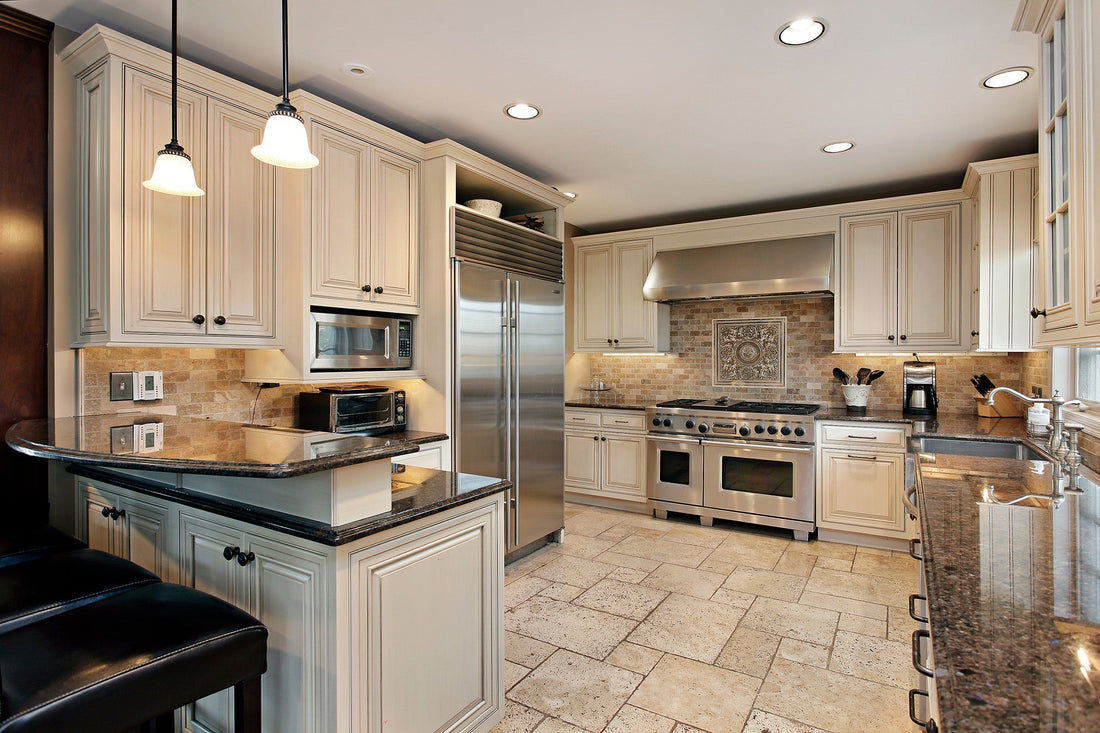
Ceramic vs. Porcelain Tile Flooring: Which is Right for Your Home?
Share
Choosing new tile for your home often brings you to a fundamental question: ceramic vs. porcelain tile flooring? Both are incredibly popular, durable, and beautiful options, but they have distinct differences that make them better suited for specific applications. Understanding these nuances is crucial for making an informed decision that ensures longevity and satisfaction.
Let's delve into the comparison of ceramic vs. porcelain to help you determine the ideal fit for your project.
Understanding Ceramic Tile Flooring
Ceramic tile is a classic choice, crafted from natural clay, sand, and other minerals, mixed with water, shaped, and then fired in a kiln at high temperatures. Most ceramic tiles used in homes today are glazed, meaning they have a liquid glass finish applied before a second firing.
Characteristics of Ceramic Tile Flooring:
- Composition: Primarily natural red or white clay.
- Porosity: Generally more porous than porcelain, especially if unglazed. Glazed ceramic has a waterproof surface, but the body beneath is more absorbent.
- Density: Less dense than porcelain.
- Durability: Durable for light to moderate residential traffic. Glaze can chip.
- Cost: Typically more affordable than porcelain.
- Ease of Installation: Easier to cut and install due to its softer composition.
Ideal Uses for Ceramic Tile Flooring:
Ceramic tile is an excellent choice for a variety of interior applications:
- Walls and Backsplashes: Its versatility in color and design makes it perfect for decorative wall treatments in kitchens and bathrooms.
- Light-Traffic Floors: Suitable for residential floors in areas like bathrooms, laundry rooms, and light-use entryways.
- Decorative Touches: Great for accents and smaller design elements.
Understanding Porcelain Tile Flooring
Porcelain tile is a type of ceramic tile, but it's made from a denser, purer clay (often feldspar) and fired at much higher temperatures and for longer periods. This process removes almost all moisture from the tile, resulting in a product that is exceptionally hard and dense.
Characteristics of Porcelain Tile Flooring:
- Composition: Denser, purer clays, often including feldspar.
- Porosity: Very low water absorption rate (0.5% or less), making it virtually impervious to water.
- Density: Extremely dense and hard.
- Durability: Highly durable and resistant to scratches, chips, stains, and heavy traffic. Ideal for both residential and commercial use.
- Cost: Generally more expensive than standard ceramic tile.
- Ease of Installation: More challenging to cut and install due to its hardness, often requiring specialized tools like a wet saw.
Ideal Uses for Porcelain Tile Flooring:
Porcelain tile's superior properties make it suitable for a wider range of demanding applications:
- High-Traffic Floors: Perfect for kitchens, entryways, hallways, living areas, and even commercial spaces.
- Wet Areas: Its impervious nature makes it ideal for showers, bathroom floors, and outdoor areas (even in freeze-thaw climates).
- Outdoor Applications: Can withstand harsh weather conditions due to its low porosity.
- Heated Floors: Compatible with radiant heating systems.
Ceramic vs. Porcelain: The Key Differences Summarized
|
Feature |
Ceramic Tile Flooring |
Porcelain Tile Flooring |
|
Composition |
Red/white clay, sand |
Denser, purer clays (feldspar) |
|
Firing Temp. |
Lower |
Higher |
|
Water Abs. Rate |
> 0.5% (Vitreous, Semi-vitreous) |
< 0.5% (Impervious) |
|
Density |
Less dense |
Highly dense |
|
Hardness |
Softer, easier to cut |
Extremely hard, more difficult to cut |
|
Durability |
Good for light-medium residential traffic |
Excellent for all residential & commercial traffic |
|
Stain Resist. |
Glazed surface resistant, body absorbent |
Highly resistant throughout |
|
Cost |
More affordable |
Generally more expensive |
|
Best Uses |
Walls, backsplashes, light-traffic floors |
All floors, walls, wet areas, outdoors, commercial |
Choosing Between Ceramic and Porcelain for Your Home
When deciding between ceramic vs. porcelain tile flooring, consider:
- Location: For high-moisture areas like shower interiors or outdoor spaces subject to freezing, porcelain is the clear winner due to its impervious nature. For low-traffic interior floors or walls, ceramic is a fantastic and more affordable choice.
- Traffic Level: If your floor will see heavy foot traffic (e.g., a busy kitchen, entryway, or commercial space), porcelain's superior durability is worth the investment.
- Budget: Ceramic often provides a more budget-friendly option for projects where porcelain's enhanced durability isn't strictly necessary.
- DIY vs. Professional Installation: If you're a seasoned DIYer, you might tackle ceramic more easily. Porcelain's hardness often benefits from professional installation.
- Aesthetics: Both offer a vast array of designs. Modern porcelain can mimic natural materials like wood and stone with incredible realism.
Find the Perfect Tile for Your New Jersey Home with Standard Tile
Understanding the differences between ceramic vs. porcelain tile flooring is vital for a successful and long-lasting installation. While both offer beautiful options, porcelain tile generally provides superior durability and water resistance for demanding areas, while ceramic tile remains a versatile and affordable choice for lighter-traffic zones and decorative applications.
Call or Visit Standard Tile at one of our 6 showrooms in East Hanover, Edison, Jersey City, Succasunna, Totowa, or Watchung. We are an industry-leading tile retailer with tile stores across New Jersey. We’ve won three Best Of Houzz awards for service and design, and our tile selections will take the interior of your home to the next level. View our galleries here, and visit us at one of our showrooms today for kitchen tile, bathroom tile, porcelain tiles, and ceramic tiles for all of your home’s living areas.